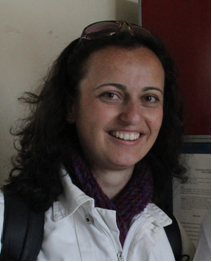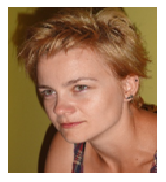Theme: Diabetes from Monitoring to Management
Diabetes Meeting 2017
Being recognized as a world-renowned organization, ConferenceSeries Ltd takes pride to introduce the commencement of “22nd International Congress on Prevention of Diabetes and Complications" from October 12-13, 2017 at London, UK. The conference aims to provide an opportunity to share knowledge, expertise along with unparalleled networking opportunities between a large number of medical and industrial professionals in this sphere. Conference series LLC’s Diabetes Meeting 2017 conference gathers renowned scientists, physicians, surgeons, young researchers, industrial delegates and talented student communities in the field of diabetic medicine under a single roof where networking and global partnering happens for the acceleration of future research.
In support of improving patient care, this activity has been planned and implemented by Conference Series, Ltd and Center for Education Development (CED). CED is jointly accredited by the Accreditation Council for Continuing Medical Education (ACCME), the Accreditation Council for Pharmacy Education (ACPE), and the American Nurses Credentialing Center (ANCC), to provide continuing education for the healthcare team.
Designation Statement
Center for Education Development designates the live format for this educational activity for AMA PRA Category 1 Credits™ and ANCC credit. Participants should only claim credit commensurate with the extent of their participation in the activity. Full accreditation information including disclosures, credit hours available and faculty information will be provided in the attendee handout onsite.
Conference series LLC through its Open Access Initiative is committed to make genuine and reliable contributions to the scientific community. Conference series LLC hosts over 400 leading-edge peer reviewed Open Access journals and has organized over 300 scientific conferences all over the world.
ConferenceSeries Ltd welcomes all the scientists, physicians, surgeons, young researchers, industrial delegates and talented student communities in the field of diabetic medicine to attend this Diabetes Conferences, where all the aspects of diabetes will be discussed under single roof. Diabetes Meeting 2017 will be an excellent amalgamation of academia and industry as it involves every aspects of empirical and conceptual thinking in exploring new dimensions in this field. It is open to all types of research methodologies both from academia and industry.
Diabetes Meeting 2017 is an international platform for presenting research about “Diabetes from monitoring to management” exchanging ideas about it and thus, contributes to the dissemination of knowledge in management of the disease for the benefit of the society. Diabetes Meeting 2017 is where the future of management and novel therapeutics for the disease intersects.
Why to Attend?
The meeting will provide many opportunities to network and discuss science and medicine, ensure equity of opportunity, find new funding and research opportunities, and build collaborations and contacts with international colleagues. We are sure that you will find this to be a truly exciting meeting presenting both the breadth and depth of clinical and basic research. Trade partners will have exposure to more areas of specialties in Diabetes and Endocrinology. World Class Speakers and Fresh New Talent from across the Globe in Health Industry gather in this world congress.
Target Audience
- Diabetologists
- Endocrinologists
- Doctors
- Researchers
- Physicians
- Business Professionals
- Academic Professionals
- Students
- Scientists
- Medical and Pharma Companies
- Medical Colleges and Hospitals
- Diabetes Societies and Associations
Track 1: Diabetes Types and Symptoms
Diabetes is a number of diseases that involve problems with the hormone insulin. Pancreas (an organ behind the stomach) releases insulin to help your body store and use the sugar and fat from the food you eat. Diabetes is a disease of lifetime. Normally, body breaks down the sugars and carbohydrates we take into a special sugar called glucose. Glucose fuels the cells in body. Insulin is required by the cells in order to take in the glucose and use it for energy. It describes a group of metabolic diseases where the person has high blood glucose either due to insulin production is inadequate (or) the body's cells do not respond properly to insulin or both.
Diabetes if left untreated can eventually cause heart disease, stroke, kidney disease, blindness, and nerve damage to nerves in the feet.
Retinopathy: Blurred or distorted vision or difficulty in reading. Development of Floaters or spots in your vision. There may be partial or total loss of vision.
Nephropathy : Nephropathy is most common symptom of type 1 and type 2 diabetes. A sudden rise in potassium levels in your blood (hyperkalemia). Symptoms include worsening of blood pressure and swelling of feet
Neuropathy: Signs and symptoms mainly depend upon type of neuropathy that develops. Regardless of the cause, neuropathy is associated with characteristic symptoms. In peripheral neuropathy damage to sensory nerves is common. Signs include Low blood sugar levels (hypoglycemia) are associated with trembling, sweating, and palpitations.
Related Diabetes conferences | Endocrinology Conferences| Conferences Series LLC
18th European Diabetes Congress July 17-18, 2017 Lisbon, Portugal; 23rd International Conference on Herbal and Alternative Remedies for Diabetes and Endocrine Disorders, November 2-4, 2017, Bangkok, Thailand; 3rd Global Congress on Endocrine Disorders and Therapies, August 24-25, 2017 Toronto, Canada; 13th World Congress on Diabetes, October 12-13, 2017, London, UK; 12th Asia Pacific Diabetes Conference and Expo, July 24-25 2017, Melbourne, Australia; Physiology, pathophysiology and future treatment options for diabetic complications December 7 2015,UK; Endocrinology Conferences October 10-12, 2016 Manchester, UK; ATTD 2017 - Advanced Technologies & Treatments for Diabetes, February 15-18 2017, Paris, France; ICDM 2017:19th International Conference on Diabetes and Metabolism, February 07-08, 2017, Mumbai, India; 19th European Congress Of Endocrinology 2017, May 20-23, Lisbon, Portugal
Related Societies
American Diabetes Association (USA), Diabetic Association of India (India), Saudi Diabetes and Endocrine Association (Saudi Arabia), Nepal Diabetic Society (Nepal), Australian Diabetes Society (Australia), Diabetes Technology Society (USA), Diabetes Australia (Australia), Austrian Diabetes Association (Austria), Finnish Diabetes Association (Finland), Association of Juvenile Diabetes (USA)
Reversing diabetes is a term used to describe interventions that reduce dependency on type 2 diabetes medications, effectively reversing the progression of the illness. With time and dedication, type 2 diabetes can be reversed and the results can be very rewarding with less tiredness and better all round health. Loss of body weight can be particularly beneficial in helping to reverse the progression of diabetes. In some cases, people may find they are able to come off medication, although blood sugar levels should be checked regularly as reversing progression of diabetes is not a cure.
Track 2: Pathophysiology of diabetes
Pathogenesis of Ulceration: Diabetic foot ulcers result from the synchronous activity of various causes. The real causes are noted to be fringe neuropathy and ischemia from fringe vascular malady.
Neuropathy : Over 60% of diabetic foot ulcers are the after effect of neuropathy. The advancement of neuropathy in influenced patients has been appeared in creature and in vitro models to be an aftereffect of hyperglycaemia -actuated metabolic irregularities. One of the all the more usually portrayed instruments of activity is the polyol pathway. In the advancement of neuropathy, the hyperglycaemic state prompts an expansion in real life of the chemicals aldose reductase and sorbitol dehydrogenase. This outcomes in the change of intracellular glucose to sorbitol and fructose.
Vascular Disease: Blood vessel infection (PAD) is a contributing component to the improvement of foot ulcers in up to half of cases. Advance, the hyperglycemia in diabetes is related with an expansion in thromboxane A2, a vasoconstrictor and platelet collection agonist, which prompts an expanded hazard for plasma hypercoagulability. In addition, smoking, hypertension, and hyperlipidemia are different variables that are normal in diabetic patients. Cumulatively, this prompts an expanded danger of ulceration in diabetic patients
Related Diabetes conferences | Endocrinology Conferences| Conferences Series LLC
13th World Congress on Diabetes, October 12-13, 2017, London, UK; 23rd International Conference on Herbal and Alternative Remedies for Diabetes and Endocrine Disorders, November 2-4, 2017, Bangkok, Thailand; 18th European Diabetes Congress July 17-18, 2017 Lisbon, Portugal; 3rd Global Congress on Endocrine Disorders and Therapies, August 24-25, 2017 Toronto, Canada; 12th Asia Pacific Diabetes Conference and Expo, July 24-25 2017, Melbourne, Australia; Physiology, pathophysiology and future treatment options for diabetic complications December 7 2015,UK; Endocrinology Conferences October 10-12, 2016 Manchester, UK; ATTD 2017 - Advanced Technologies & Treatments for Diabetes, February 15-18 2017, Paris, France; ICDM 2017:19th International Conference on Diabetes and Metabolism, February 07-08, 2017, Mumbai, India; 19th European Congress Of Endocrinology 2017, May 20-23, Lisbon, Portugal
Related Societies
Estonian Diabetes Association (Estonia), Finnish Diabetes Association (Finland), French Diabetics Association (France), German Diabetes Union, (Germany), Hellenic Diabetes Association (Greece), Hong Kong Diabetes Federation (Hong Kong), Icelandic Diabetic Association (Iceland), Diabetes Federation of Ireland (Ireland), The Diabetes Association (Italy), Japan Diabetes Society (Japan)
Track 3: Genesis of Diabetes
Diabetes, regularly alluded as diabetes mellitus, depicts a gathering of metabolic maladies in which the individual has high blood glucose (blood sugar),it is either on the grounds that insulin creation is insufficient, or in light of the fact that the body's phones don't react appropriately to insulin, or both the sorts. People with high glucose will regularly encounter polyuria, they will turn out to be progressively parched (polydipsia) and hungry (polyphagia). The correct reason for sort 1 diabetes is obscure. What is known is that your invulnerable framework assaults and obliterates insulin-creating cells in the pancreas. This abandons you with almost no insulin. Rather than being transported into your cells, sugar develops in your circulation system. Sort 1 is thought to be brought on by a mix of hereditary helplessness and natural elements, however precisely what a large portion of those variables is yet indistinct. In prediabetes — which can prompt type 2 diabetes — and in type 2 diabetes, your cells wind up plainly impervious to the activity of insulin, and your pancreas can't make enough insulin to conquer this resistance. Rather than moving into your cells where it's required for vitality, sugar develops in your circulatory system.
Related Diabetes conferences | Endocrinology Conferences| Conferences Series LLC
12th Asia Pacific Diabetes Conference and Expo, July 24-25 2017, Melbourne, Australia; 23rd International Conference on Herbal and Alternative Remedies for Diabetes and Endocrine Disorders, November 2-4, 2017, Bangkok, Thailand; 13th World Congress on Diabetes, October 12-13, 2017, London, UK; 18th European Diabetes Congress July 17-18, 2017 Lisbon, Portugal; 3rd Global Congress on Endocrine Disorders and Therapies, August 24-25, 2017 Toronto, Canada; Physiology, pathophysiology and future treatment options for diabetic complications December 7 2015,UK; Endocrinology Conferences October 10-12, 2016 Manchester, UK; ATTD 2017 - Advanced Technologies & Treatments for Diabetes, February 15-18 2017, Paris, France; ICDM 2017:19th International Conference on Diabetes and Metabolism, February 07-08, 2017, Mumbai, India; 19th European Congress Of Endocrinology 2017, May 20-23, Lisbon, Portugal
Related Societies
Netherlands Diabetes Association (Netherlands), Diabetes New Zealand (New Zealand), Norwegian Diabetes Association (Norway), Diabetes Philippines (Philippines), Polish Diabetes Association (Poland), Diabetic Association of Portugal (Portugal), Diabetic Society of Singapore (Singapore), Diabetes South Africa (South Africa), Spanish Diabetes Society (Spain), Swedish Diabetes Association (Sweden)
Track 4: Transplantations in Diabetes
Diabetes, regularly alluded as diabetes mellitus, depicts a gathering of metabolic maladies in which the individual has high blood glucose (blood sugar),it is either on the grounds that insulin creation is insufficient, or in light of the fact that the body's phones don't react appropriately to insulin, or both the sorts. People with high glucose will regularly encounter polyuria, they will turn out to be progressively parched (polydipsia) and hungry (polyphagia). The correct reason for sort 1 diabetes is obscure. What is known is that your invulnerable framework assaults and obliterates insulin-creating cells in the pancreas. This abandons you with almost no insulin. Rather than being transported into your cells, sugar develops in your circulation system. Sort 1 is thought to be brought on by a mix of hereditary helplessness and natural elements, however precisely what a large portion of those variables are is as yet indistinct. In prediabetes — which can prompt type 2 diabetes — and in sort 2 diabetes, your cells wind up plainly impervious to the activity of insulin, and your pancreas can't make enough insulin to conquer this resistance. Rather than moving into your cells where it's required for vitality, sugar develops in your circulatory system..
Related Diabetes conferences | Endocrinology Conferences| Conferences Series LLC
18th European Diabetes Congress July 17-18, 2017 Lisbon, Portugal; 12th Asia Pacific Diabetes Conference and Expo, July 24-25 2017, Melbourne, Australia; 13th World Congress on Diabetes, October 12-13, 2017, London, UK; 23rd International Conference on Herbal and Alternative Remedies for Diabetes and Endocrine Disorders, November 2-4, 2017, Bangkok, Thailand; 3rd Global Congress on Endocrine Disorders and Therapies, August 24-25, 2017 Toronto, Canada; Physiology, pathophysiology and future treatment options for diabetic complications December 7 2015,UK; Endocrinology Conferences October 10-12, 2016 Manchester, UK; ATTD 2017 - Advanced Technologies & Treatments for Diabetes, February 15-18 2017, Paris, France; ICDM 2017:19th International Conference on Diabetes and Metabolism, February 07-08, 2017, Mumbai, India; 19th European Congress Of Endocrinology 2017, May 20-23, Lisbon, Portugal
Related Societies
American Diabetes Association (USA), Diabetic Association of India (India), Saudi Diabetes and Endocrine Association (Saudi Arabia), Nepal Diabetic Society (Nepal), Australian Diabetes Society (Australia), Diabetes Technology Society (USA), Diabetes Australia (Australia), Austrian Diabetes Association (Austria), Finnish Diabetes Association (Finland), Association of Juvenile Diabetes (USA)
Track 5: Diabetes and its Complications
High blood glucose levels are harming to veins and can improve the probability of them narrowing through atherosclerosis. This harm likewise prompts poor supply of blood to nerves.
Inadequately controlled hyperglycemia holding on for a considerable length of time can prompt entanglements influencing little veins (microvascular intricacies), extensive veins (macrovascular difficulties) or both.
The procedure by which vascular infection creates is perplexing and happens through various pathways that researchers keep on investigating
Microvascular entanglements - those subsequent from harm to little veins - are the most well-known complexities of diabetes and include:
Diabetic Retinopathy - infection of the eye
Diabetic Nephropathy - infection of the kidneys
Diabetic Neuropathy - infection of the nerves.
Related Diabetes conferences | Endocrinology Conferences| Conferences Series LLC
23rd International Conference on Herbal and Alternative Remedies for Diabetes and Endocrine Disorders, November 2-4, 2017, Bangkok, Thailand; 18th European Diabetes Congress July 17-18, 2017 Lisbon, Portugal; 12th Asia Pacific Diabetes Conference and Expo, July 24-25 2017, Melbourne, Australia; 13th World Congress on Diabetes, October 12-13, 2017, London, UK; 3rd Global Congress on Endocrine Disorders and Therapies, August 24-25, 2017 Toronto, Canada; Physiology, pathophysiology and future treatment options for diabetic complications December 7 2015,UK; Endocrinology Conferences October 10-12, 2016 Manchester, UK; ATTD 2017 - Advanced Technologies & Treatments for Diabetes, February 15-18 2017, Paris, France; ICDM 2017:19th International Conference on Diabetes and Metabolism, February 07-08, 2017, Mumbai, India; 19th European Congress Of Endocrinology 2017, May 20-23, Lisbon, Portugal
Related Societies
Estonian Diabetes Association (Estonia), Finnish Diabetes Association (Finland), French Diabetics Association (France), German Diabetes Union, (Germany), Hellenic Diabetes Association (Greece), Hong Kong Diabetes Federation (Hong Kong), Icelandic Diabetic Association (Iceland), Diabetes Federation of Ireland (Ireland), The Diabetes Association (Italy), Japan Diabetes Society (Japan)
Track 6: Computerised applications in Diabetes
The predominance of diabetes is rising internationally. Poor glucose control brings about higher rates of diabetes-related complexities and an expansion in medicinal services use. Diabetes self-administration instruction (DSME) preparing has appeared to enhance glucose control, and accordingly may diminish long haul complexities. Usage of diabetes self-administration instruction projects may not be possible for every one of the establishments or in creating nations because of absence of assets and higher expenses related with DSME preparing. With the expanding utilization of cell phones and Internet, there is a chance to utilize computerized apparatuses for preparing individuals with diabetes to self-deal with their sickness. Various versatile applications, Internet entryway, and sites are accessible to help patients to enhance their diabetes mind. Be that as it may, the reviews are constrained to demonstrate its adequacy and money saving advantages in diabetes self-administration. Likewise, there are many difficulties ahead for the advanced industry.
Late endeavors have been made to create versatile programming that can compute wholesome data for the patients in view of their sustenance consumption. Frøisland created and tried a cell phone-based instrument to catch (DiaMob) and envision teenagers' sustenance consumption went for understanding sugar numbering and to encourage correspondence to every day treatment changes. Executing a representation instrument is a critical commitment for youngsters to comprehend the nuts and bolts of diabetes and to engage youngsters to characterize their treatment challenges. It enables patients' freedom and administration of their ailment..
Related Diabetes conferences | Endocrinology Conferences| Conferences Series LLC
13th World Congress on Diabetes, October 12-13, 2017, London, UK; 16th Global Diabetes Conference & Medicare Expo, March 22-23 2017, Rome Italy; 18th European Diabetes Congress July 17-18, 2017 Lisbon, Portugal; 23rd International Conference on Herbal and Alternative Remedies for Diabetes and Endocrine Disorders, November 2-4, 2017, Bangkok, Thailand; 3rd Global Congress on Endocrine Disorders and Therapies, August 24-25, 2017 Toronto, Canada; 12th Asia Pacific Diabetes Conference and Expo, July 24-25 2017, Melbourne, Australia; Physiology, pathophysiology and future treatment options for diabetic complications December 7 2015,UK; Endocrinology Conferences October 10-12, 2016 Manchester, UK; ATTD 2017 - Advanced Technologies & Treatments for Diabetes, February 15-18 2017, Paris, France; ICDM 2017:19th International Conference on Diabetes and Metabolism, February 07-08, 2017, Mumbai, India; 19th European Congress Of Endocrinology 2017, May 20-23, Lisbon, Portugal
Related Societies
Netherlands Diabetes Association (Netherlands), Diabetes New Zealand (New Zealand), Norwegian Diabetes Association (Norway), Diabetes Philippines (Philippines), Polish Diabetes Association (Poland), Diabetic Association of Portugal (Portugal), Diabetic Society of Singapore (Singapore), Diabetes South Africa (South Africa), Spanish Diabetes Society (Spain), Swedish Diabetes Association (Sweden)
Track 7: Technologies for the Treatment Of Diabetes
The idea of 'new advances' for type 1 diabetes and new revelation and propelled type 2 diabetes treatment has extended as of late at a rate that some should seriously think about similar to 'Moore's Law', and the sheer number of new advances going into the sort 1 diabetes commercial center is additionally developing at a surprising rate. From the patient's point of view, this is energizing as well as can prompt a feeling of positive thinking. Innovations that today are developing typical (e.g. insulin pumps, fast HbA1c checking, and so forth go under new restorative components of diabetes. Without a doubt, it could be contended that the real advances in type 1 diabetes mind made inside the last quarter of a century have originated from innovation instead of science. In the meantime, not all new advancements succeed (e.g. the Glucowatch), paying little mind to their implied guarantee. Both type 1 diabetes patients and their social insurance suppliers will soon observe a progression of further propelled medicinal innovations utilized as a part of doctor's facility and new advances and novel treatments in diabetes treatment whose premise is fixing to the thought of enhancing the lives of those with the infection.
Related Diabetes conferences | Endocrinology Conferences| Conferences Series LLC
3rd Global Congress on Endocrine Disorders and Therapies, August 24-25, 2017 Toronto, Canada; 13th World Congress on Diabetes, October 12-13, 2017, London, UK; 16th Global Diabetes Conference & Medicare Expo, March 22-23 2017, Rome Italy; 18th European Diabetes Congress July 17-18, 2017 Lisbon, Portugal; 23rd International Conference on Herbal and Alternative Remedies for Diabetes and Endocrine Disorders, November 2-4, 2017, Bangkok, Thailand; 12th Asia Pacific Diabetes Conference and Expo, July 24-25 2017, Melbourne, Australia; Physiology, pathophysiology and future treatment options for diabetic complications December 7 2015,UK; Endocrinology Conferences October 10-12, 2016 Manchester, UK; ATTD 2017 - Advanced Technologies & Treatments for Diabetes, February 15-18 2017, Paris, France; ICDM 2017:19th International Conference on Diabetes and Metabolism, February 07-08, 2017, Mumbai, India; 19th European Congress Of Endocrinology 2017, May 20-23, Lisbon, Portugal
Related Societies
American Diabetes Association (USA), Diabetic Association of India (India), Saudi Diabetes and Endocrine Association (Saudi Arabia), Nepal Diabetic Society (Nepal), Australian Diabetes Society (Australia), Diabetes Technology Society (USA), Diabetes Australia (Australia), Austrian Diabetes Association (Austria), Finnish Diabetes Association (Finland), Association of Juvenile Diabetes (USA)
Track 8 : Screening of Diabetes
Blood tests are used to diagnosis diabetes and prediabetes because early in the disease type 2 diabetes may have no symptoms. All diabetes blood tests involve drawing blood at a health care provider’s office or commercial facility and sending the sample to a lab for analysis. Lab analysis of blood is needed to ensure test results are accurate. Glucose measuring devices used in a health care provider’s office, such as finger-stick devices, are not accurate enough for diagnosis but may be used as a quick indicator of high blood glucose.
Testing enables health care providers to find and treat diabetes before complications occur and to find and treat prediabetes , which can delay or prevent type 2 diabetes from developing. Diabetes is diagnosed when: symptoms are present and fasting blood test result is at or above 7.0 mmol/L or a random blood test result is at or above 11.1 mmol/L. HbA1c blood test result is ≥ 6.5% (48 mmol/mol) there have been no symptoms and two abnormal blood glucose tests (as above) on separate days.
Related Diabetes conferences | Endocrinology Conferences| Conferences Series LLC
23rd International Conference on Herbal and Alternative Remedies for Diabetes and Endocrine Disorders, November 2-4, 2017, Bangkok, Thailand; 3rd Global Congress on Endocrine Disorders and Therapies, August 24-25, 2017 Toronto, Canada; 13th World Congress on Diabetes, October 12-13, 2017, London, UK; 16th Global Diabetes Conference & Medicare Expo, March 22-23 2017, Rome Italy; 18th European Diabetes Congress July 17-18, 2017 Lisbon, Portugal; 12th Asia Pacific Diabetes Conference and Expo, July 24-25 2017, Melbourne, Australia; Physiology, pathophysiology and future treatment options for diabetic complications December 7 2015,UK; Endocrinology Conferences October 10-12, 2016 Manchester, UK; ATTD 2017 - Advanced Technologies & Treatments for Diabetes, February 15-18 2017, Paris, France; ICDM 2017:19th International Conference on Diabetes and Metabolism, February 07-08, 2017, Mumbai, India; 19th European Congress Of Endocrinology 2017, May 20-23, Lisbon, Portugal
Related Societies
Estonian Diabetes Association (Estonia), Finnish Diabetes Association (Finland), French Diabetics Association (France), German Diabetes Union, (Germany), Hellenic Diabetes Association (Greece), Hong Kong Diabetes Federation (Hong Kong), Icelandic Diabetic Association (Iceland), Diabetes Federation of Ireland (Ireland), The Diabetes Association (Italy), Japan Diabetes Society (Japan)
Track 9: Diabetes, Metabolism and Obesity
The first portrayal of the metabolic disorder by Reaven comprised of heftiness, insulin resistance, hypertension, impeded glucose resilience or diabetes, hyperinsulinemia and dyslipidemia described by lifted triglyceride, and low HDL focuses. The majority of the components portrayed above are hazard elements for atherosclerosis, and in this way, metabolic disorder constituted a huge hazard for coronary illness. The elements of heftiness/overweight and insulin resistance additionally gave a critical hazard to creating type 2 diabetes. The dangers for coronary illness and diabetes with metabolic disorder are more noteworthy than those for basic weight alone, and in this manner, a comprehension of the pathogenesis and through it, a normal way to deal with its treatment are of prime significance. As our comprehension of the activity of insulin develops to exhaustively incorporate the current revelations, we can better observe that insulin resistance is the premise of most if not the greater part of the components of this disorder. The first conceptualization of this disorder was on the premise of imperviousness to the metabolic activities of insulin. In this manner, hyperinulinemia, glucose prejudice, type 2 diabetes, hypertriglyceridemia, and low HDL focuses could be represented by imperviousness to the activities of insulin on starch and lipid digestion. Despite the fact that the elements depicted above would to some degree clarify the atherogenesis, Reaven has kept up that hyperinsulinemia itself adds to atherogenicity, and subsequently, insulin is atherogenic, prompting the coronary illness and cerebrovascular infection related with this disorder.
Heftiness most likely prompts hypertension through expanded vascular tone made by a decreased bioavailability of NO in view of expanded oxidative anxiety, expanded hilter kilter dimethylarginine (ADMA) focuses, expanded thoughtful tone, and expanded articulation of angiotensinogen by fat tissue prompting an actuation of the renin-angiotensin framework. The remainder of these variables requires assist basic examination.
Related Diabetes conferences | Endocrinology Conferences| Conferences Series LLC
12th Asia Pacific Diabetes Conference and Expo, July 24-25 2017, Melbourne, Australia; 23rd International Conference on Herbal and Alternative Remedies for Diabetes and Endocrine Disorders, November 2-4, 2017, Bangkok, Thailand; 13th World Congress on Diabetes, October 12-13, 2017, London, UK; 16th Global Diabetes Conference & Medicare Expo, March 22-23 2017, Rome Italy; 18th European Diabetes Congress July 17-18, 2017 Lisbon, Portugal; 3rd Global Congress on Endocrine Disorders and Therapies, August 24-25, 2017 Toronto, Canada; Physiology, pathophysiology and future treatment options for diabetic complications December 7 2015,UK; Endocrinology Conferences October 10-12, 2016 Manchester, UK; ATTD 2017 - Advanced Technologies & Treatments for Diabetes, February 15-18 2017, Paris, France; ICDM 2017:19th International Conference on Diabetes and Metabolism, February 07-08, 2017, Mumbai, India; 19th European Congress Of Endocrinology 2017, May 20-23, Lisbon, Portugal
Related Societies
Netherlands Diabetes Association (Netherlands), Diabetes New Zealand (New Zealand), Norwegian Diabetes Association (Norway), Diabetes Philippines (Philippines), Polish Diabetes Association (Poland), Diabetic Association of Portugal (Portugal), Diabetic Society of Singapore (Singapore), Diabetes South Africa (South Africa), Spanish Diabetes Society (Spain), Swedish Diabetes Association (Sweden)
Track 10: Diabetes and Associated Disorders
Diabetes is a syndrome – literally a “running together” of associated conditions. Type 1 diabetes associates with a number of autoimmune disorders. Obesity, specifically central obesity, is prominent among these, and the combination of “diabesity” is associated with hypertension, dyslipidaemia and arterial disease – the so-called metabolic syndrome. More recently, it has been appreciated that certain types of cancer are more common in association with diabetes and obesity, and there has been controversy as to the extent to which treatments for diabetes can modulate the risk of cancer in one direction or the other.
The incidence of type 2 diabetes rises sharply in relation to obesity. The combination of obesity with insulin resistance or hyperinsulinaemia is however associated with all features of the metabolic syndrome, arterial disease and some types of cancer. Hypertension may arise as a complication of diabetic nephropathy, or (more commonly) as a feature of the type 2 diabetes syndrome. The prevalence of hypertension is increased in those with abnormal glucose tolerance, and it is commonly present at the diagnosis of diabetes. The association is independent of potential confounders such as age, glucose control or proteinuria. The dyslipidaemia of diabetes is characterized by high triglycerides and low HDL cholesterol. This is considered due to overproduction (or reduced removal) of VLDL particles, which is itself a feature of insulin resistance. Diabetes and obesity are associated with a similar range of cancers, including pancreatic, hepatic, endometrial, breast and colorectal cancers.
Related Diabetes conferences | Endocrinology Conferences| Conferences Series LLC
23rd International Conference on Herbal and Alternative Remedies for Diabetes and Endocrine Disorders, November 2-4, 2017, Bangkok, Thailand; 18th European Diabetes Congress July 17-18, 2017 Lisbon, Portugal; 12th Asia Pacific Diabetes Conference and Expo, July 24-25 2017, Melbourne, Australia; 13th World Congress on Diabetes, October 12-13, 2017, London, UK; 16th Global Diabetes Conference & Medicare Expo, March 22-23 2017, Rome Italy; 3rd Global Congress on Endocrine Disorders and Therapies, August 24-25, 2017 Toronto, Canada; Physiology, pathophysiology and future treatment options for diabetic complications December 7 2015,UK; Endocrinology Conferences October 10-12, 2016 Manchester, UK; ATTD 2017 - Advanced Technologies & Treatments for Diabetes, February 15-18 2017, Paris, France; ICDM 2017:19th International Conference on Diabetes and Metabolism, February 07-08, 2017, Mumbai, India; 19th European Congress Of Endocrinology 2017, May 20-23, Lisbon, Portugal
Related Societies
Estonian Diabetes Association (Estonia), Finnish Diabetes Association (Finland), French Diabetics Association (France), German Diabetes Union, (Germany), Hellenic Diabetes Association (Greece), Hong Kong Diabetes Federation (Hong Kong), Icelandic Diabetic Association (Iceland), Diabetes Federation of Ireland (Ireland), The Diabetes Association (Italy), Japan Diabetes Society (Japan)
Track 11: Paediatric diabetes
Diabetes is a long term condition which can influence the life of an individual. It mainly affects kids in their development and advancement and enthusiastic prosperity. Worldwide there is a clear increment in its occurrence for kids particularly below 5 populaces. years old. Furthermore, this illness , may expand the danger of creating miniaturized scale vascular and full scale –vascular inconveniences. T1d is well-known interminable ailments starting in the adolescence and records for more than 90% of the instances of youth diabetes, with a general predominance rate of 0.2-0.5% over the Caucasoid
Related Diabetes conferences | Endocrinology Conferences| Conferences Series LLC
3rd Global Congress on Endocrine Disorders and Therapies, August 24-25, 2017 Toronto, Canada; 13th World Congress on Diabetes, October 12-13, 2017, London, UK; 16th Global Diabetes Conference & Medicare Expo, March 22-23 2017, Rome Italy; 18th European Diabetes Congress July 17-18, 2017 Lisbon, Portugal; 23rd International Conference on Herbal and Alternative Remedies for Diabetes and Endocrine Disorders, November 2-4, 2017, Bangkok, Thailand; 12th Asia Pacific Diabetes Conference and Expo, July 24-25 2017, Melbourne, Australia; Physiology, pathophysiology and future treatment options for diabetic complications December 7 2015,UK; Endocrinology Conferences October 10-12, 2016 Manchester, UK; ATTD 2017 - Advanced Technologies & Treatments for Diabetes, February 15-18 2017, Paris, France; ICDM 2017:19th International Conference on Diabetes and Metabolism, February 07-08, 2017, Mumbai, India; 19th European Congress Of Endocrinology 2017, May 20-23, Lisbon, Portugal
Related Societies
American Diabetes Association (USA), Diabetic Association of India (India), Saudi Diabetes and Endocrine Association (Saudi Arabia), Nepal Diabetic Society (Nepal), Australian Diabetes Society (Australia), Diabetes Technology Society (USA), Diabetes Australia (Australia), Austrian Diabetes Association (Austria), Finnish Diabetes Association (Finland), Association of Juvenile Diabetes (USA)
Track 12: Gestational Diabetes
Gestational diabetes otherwise called gestational diabetes mellitus (GDM), is a condition in which a lady without diabetes grows high glucose levels amid pregnancy. Gestational diabetes lead to large outcomes in expanding the danger of requiring a Caesarean area. Babies destined to such moms with ineffectively treated gestational diabetes are at expanded danger of having low glucose after birth, and jaundice. On the off chance that untreated, it might prompt stillbirth. In long haul odds of creating type 2 diabetes may increment in that people.
Gestational diabetes is created because of insufficient insulin in the setting of insulin resistance. Chance variables incorporate being overweight and having polycystic ovarian disorder. Analysis is finished by blood tests. For those patients at ordinary hazard for the most part screening will be done in the vicinity of 24 and 28 weeks growth.
Related Diabetes conferences | Endocrinology Conferences| Conferences Series LLC
23rd International Conference on Herbal and Alternative Remedies for Diabetes and Endocrine Disorders, November 2-4, 2017, Bangkok, Thailand; 3rd Global Congress on Endocrine Disorders and Therapies, August 24-25, 2017 Toronto, Canada; 13th World Congress on Diabetes, October 12-13, 2017, London, UK; 16th Global Diabetes Conference & Medicare Expo, March 22-23 2017, Rome Italy; 18th European Diabetes Congress July 17-18, 2017 Lisbon, Portugal; 12th Asia Pacific Diabetes Conference and Expo, July 24-25 2017, Melbourne, Australia; Physiology, pathophysiology and future treatment options for diabetic complications December 7 2015,UK; Endocrinology Conferences October 10-12, 2016 Manchester, UK; ATTD 2017 - Advanced Technologies & Treatments for Diabetes, February 15-18 2017, Paris, France; ICDM 2017:19th International Conference on Diabetes and Metabolism, February 07-08, 2017, Mumbai, India; 19th European Congress Of Endocrinology 2017, May 20-23, Lisbon, Portugal
Related Societies
Estonian Diabetes Association (Estonia), Finnish Diabetes Association (Finland), French Diabetics Association (France), German Diabetes Union, (Germany), Hellenic Diabetes Association (Greece), Hong Kong Diabetes Federation (Hong Kong), Icelandic Diabetic Association (Iceland), Diabetes Federation of Ireland (Ireland), The Diabetes Association (Italy), Japan Diabetes Society (Japan)
Track 13 : Diabetes Education and its Risk Factors
Diabetes Education: It includes diabetes education modules. The Diabetes Education Modules (2011) contain more than 800 slides and detailed speaker notes to reflect the objectives contained in the International Curriculum for Health Professionals Education. Health professionals anywhere in the world can adopt this resource to develop diabetes education programmes for other health professionals.
The consistent, evidence-based research and information provided in these materials are designed to help educators gain recognition for their training and assure governments and education organisations that the education programmes they offer are of a high standard.
Risk Factors: The risk factors for type 1 diabetes are still being researched. However, having a family member with type 1 diabetes slightly increases the risk of developing the disease. Environmental factors and exposure to some viral infections have also been linked to the risk of developing type 1 diabetes. Several risk factors have been associated with type 2 diabetes and include:
- Family history of diabetes
- Overweight
- Unhealthy diet
- Physical inactivity
- Increasing age
- High blood pressure
- Ethnicity
- Impaired glucose tolerance (IGT)
- History of gestational diabetes
- Poor nutrition during pregnancy
Related Diabetes conferences | Endocrinology Conferences| Conferences Series LLC
13th World Congress on Diabetes, October 12-13, 2017, London, UK; 16th Global Diabetes Conference & Medicare Expo, March 22-23 2017, Rome Italy; 18th European Diabetes Congress July 17-18, 2017 Lisbon, Portugal; 23rd International Conference on Herbal and Alternative Remedies for Diabetes and Endocrine Disorders, November 2-4, 2017, Bangkok, Thailand; 3rd Global Congress on Endocrine Disorders and Therapies, August 24-25, 2017 Toronto, Canada; 12th Asia Pacific Diabetes Conference and Expo, July 24-25 2017, Melbourne, Australia; Physiology, pathophysiology and future treatment options for diabetic complications December 7 2015,UK; Endocrinology Conferences October 10-12, 2016 Manchester, UK; ATTD 2017 - Advanced Technologies & Treatments for Diabetes, February 15-18 2017, Paris, France; ICDM 2017:19th International Conference on Diabetes and Metabolism, February 07-08, 2017, Mumbai, India; 19th European Congress Of Endocrinology 2017, May 20-23, Lisbon, Portugal
Related Societies
Netherlands Diabetes Association (Netherlands), Diabetes New Zealand (New Zealand), Norwegian Diabetes Association (Norway), Diabetes Philippines (Philippines), Polish Diabetes Association (Poland), Diabetic Association of Portugal (Portugal), Diabetic Society of Singapore (Singapore), Diabetes South Africa (South Africa), Spanish Diabetes Society (Spain), Swedish Diabetes Association (Sweden)
Track 14: Emerging Focus in Diabetes Research
Diabetes tosses a light in a developing scourge forcing astute social financial emergency around the country. In spite of logical advancements and better medicinal services inquire about pleasantries the infection keeps on troubling various sections, particularly center and low wage nations. The present patterns assign the ascent in sudden passing, representing a noteworthy risk to worldwide improvement. The headway in science and innovation have watched the development of fresher era of nano medicine in medications revelation. At that point, the documentation and clinical examination of bioactive fixings from plants have changed the examination on medication disclosure and lead recognizable proof for diabetes administration control..
Related Diabetes conferences | Endocrinology Conferences| Conferences Series LLC
3rd Global Congress on Endocrine Disorders and Therapies, August 24-25, 2017 Toronto, Canada; 13th World Congress on Diabetes, October 12-13, 2017, London, UK; 16th Global Diabetes Conference & Medicare Expo, March 22-23 2017, Rome Italy; 18th European Diabetes Congress July 17-18, 2017 Lisbon, Portugal; 23rd International Conference on Herbal and Alternative Remedies for Diabetes and Endocrine Disorders, November 2-4, 2017, Bangkok, Thailand; 12th Asia Pacific Diabetes Conference and Expo, July 24-25 2017, Melbourne, Australia; Physiology, pathophysiology and future treatment options for diabetic complications December 7 2015,UK; Endocrinology Conferences October 10-12, 2016 Manchester, UK; ATTD 2017 - Advanced Technologies & Treatments for Diabetes, February 15-18 2017, Paris, France; ICDM 2017:19th International Conference on Diabetes and Metabolism, February 07-08, 2017, Mumbai, India; 19th European Congress Of Endocrinology 2017, May 20-23, Lisbon, Portugal
Related Societies
American Diabetes Association (USA), Diabetic Association of India (India), Saudi Diabetes and Endocrine Association (Saudi Arabia), Nepal Diabetic Society (Nepal), Australian Diabetes Society (Australia), Diabetes Technology Society (USA), Diabetes Australia (Australia), Austrian Diabetes Association (Austria), Finnish Diabetes Association (Finland), Association of Juvenile Diabetes (USA)
Importance & Scope
Healthcare for London has already identified that much needs to be done to improve the care of people with polygenic disease in London and to bring care up to the national standards to deliver the polygenic disease National Services Framework. The very fact that less than 15 august 1945 of Londoners with diabetes have undertaken structured patient education and a similar proportion are unaware of which type of polygenic disease they need is indicative of the very fact that London has not adequately invested with in polygenic disease care. Polygenic disease uk so welcomes the aid for London programme which we believe will improve prioritisation, investment and organisation of integrated polygenic disease care. Folks with polygenic disease want access to the right skills, within the right place, at the right time through Renaissance man, specialist and social care operating along. We have a tendency to be notably happy that the aid for London model recognises these desires and holds folks with polygenic disease at its heart, in terms of care coming up with and user involvement to deliver supported self-management. The aspirations of the set up are challenging however we have a tendency to believe they will be achieved and appearance forward to tributary to measurable enhancements over future 3 years. The case for ever-changing the means we have a tendency to deliver polygenic disease care within the capital is compelling. There are quite 2 million folks with polygenic disease within the UK1 and prevalence is expected to extend within the future. There are, moreover, vital inequalities within the means polygenic disease is prevented, diagnosed and treated across London. Folks with semi-permanent conditions are the most important users of aid in London and account for eightieth of general practitioner consultations nationally. Disbursal on polygenic disease currently accounts for associate degree calculable 100% of the NHS budget. Healthcare for London aims to dramatically improve access to high-quality polygenic disease take care of all Londoners and to scale back health inequalities within the capital. a brand new model of care and care pathways are developed with aid professionals, folks with polygenic disease and commissioners. It’ll place patients at the centre of care provision. Folks with polygenic disease are supported to self-manage their condition through education programmes, put together in agreement tending plans, and a lot of support and recommendation from trained professionals. A serious goal is to improve interference and early detection of polygenic disease. We have a tendency to also be seeking to forestall complications and supply applicable acute management for folks with polygenic disease. To achieve this we'd like to supply higher education for folks with polygenic disease and training for the hands, with a larger emphasis on self-management. We have a tendency to conjointly ought to higher manage polygenic disease in maternity, in children and adolescents with polygenic disease, and for folks receiving care in inmate settings.
Why London?
There are more than 350,000 people with polygenic disease in London. Polygenic disease is additional common in people of black and south Asian origin. For example, the prevalence of polygenic disease is up to 5 times higher in Pakistani and Bangladeshi people than in Caucasian race. Polygenic disease tends to gift at a younger age in people of black and south Asian descent, and these groups have the next risk of developing diabetes-related long run complications. Generally, London features a higher proportion of black and Asian ethnic groups compared with the remainder of the country. For this reason, London features a higher prevalence of polygenic disease and polygenic disease complications. It’s calculable that around one in four people with polygenic disease in London, about 80,000 people2 , do not understand they need it. These people area unit at important risk of developing semi-permanent complications. There is variation within the level of unknown polygenic disease across London PCTs (figure 1). Around 1/2 folks with polygenic disease have complications at diagnosing, suggesting that they need already had the condition for up to ten years. Unknown polygenic disease, presenting as associate degree acute emergency, contributes to the requirement for unscheduled emergency care and acute admission. Polygenic disease connected accident and emergency (A&E) attendances and hospital admissions considerably impact on secondary care work. Polygenic disease is that the semi-permanent condition that may increase most in terms of prevalence. The quantity of individuals with polygenic disease in London is predicted to extend by up to 2,000 between 2005 and 2025 unless successful blubber bar ways area unit introduced. The rising prevalence of polygenic disease is attributable to associate degree ageing population and unhealthy lifestyles resulting in blubber. This is often a risk issue significantly important for those of Asian or African Caribbean descent. The incidence and prevalence of polygenic disease is rising dramatically, with recent information suggesting a seventy fifth increase within the past seven years. For the primary time in London, additional young girls with polygenic disease United Nations agency become pregnant currently have sort two instead of sort one polygenic disease.
One in 10 people aged between 20 and 79 in England will die of diabetes related conditions. The impact of diabetes on mortality rates in London is significant:
• London has the highest percentage of deaths in England attributable to diabetes for people aged 20-79 years.
• London has higher than average deprivation which is a major risk factor for mortality from diabetes (figure 3).
• Two-thirds of these deaths are premature (aged under 75 years) and therefore represent a significant economic loss to society.
• Almost 12% of all premature deaths in London are attributable to diabetes. Life expectancy is reduced by 25% (five years for males and seven years for females) if diabetes develops at age 55 years, and more if it develops at a younger age.
Market Value on Diabetic Research:
The Type 2 Diabetes Mellitus (T1DM) market across the eight major countries of the US, Canada, France, Germany, Italy, Spain, the UK and Japan will expand from $4.2 billion in 2014 to $7.1 billion by 2021, at a robust Compound Annual Growth Rate (CAGR) of 7.9%, according to business intelligence provider GBI Research.
The type 2 diabetes treatment market in Asia-Pacific (APAC) will rise in value from an estimated $6.5 billion in 2013 to $10.5 billion by 2020, representing a modest Compound Annual Growth Rate (CAGR) of 7.1%, according to business intelligence provider GBI Research.
Over 29.1 million people (9.3 percent) of the U.S. population currently has diabetes, reports the Centers for Disease Control, and it is an epidemic that seems to be growing. Not only is diabetes detrimental to one’s health, but it is also a costly disease to treat. The total estimated cost of diagnosed diabetes in 2012 was $245 billion, according to the ADA, including $176 billion in direct medical costs and $69 billion in reduced productivity.
Conference Highlights
- Diabetes Types and Symptoms
- Pathophysiology of diabetes
- Genesis of Diabetes
- Transplantations in Diabetes
- Diabetes and its Complications
- Computerised applications in Diabetes
- Technologies for the Treatment Of Diabetes
- Screening of Diabetes
- Diabetes, Metabolism and Obesity
- Paediatric diabetes
- Diabetes and Associated Disorders
- Gestational Diabetes
- Emerging Focus on Diabetes Research
- Diabetes Education and its Risk Factors
To share your views and research, please click here to register for the Conference.
To Collaborate Scientific Professionals around the World
| Conference Date | October 12-13, 2017 | ||
| Sponsors & Exhibitors |
|
||
| Speaker Opportunity Closed | Day 1 | Day 2 | |
| Poster Opportunity Closed | Click Here to View | ||
Useful Links
Special Issues
All accepted abstracts will be published in respective Our International Journals.
- Journal of Diabetes & Metabolism
- Pancreatic Disorders & Therapy
- Journal of Steroids & Hormonal Science
Abstracts will be provided with Digital Object Identifier by























































































